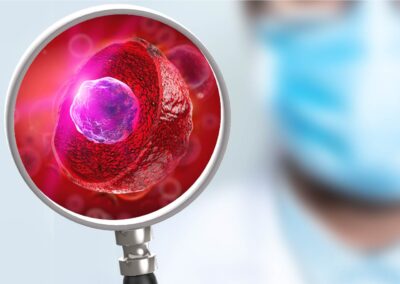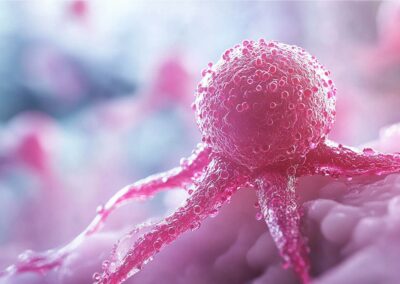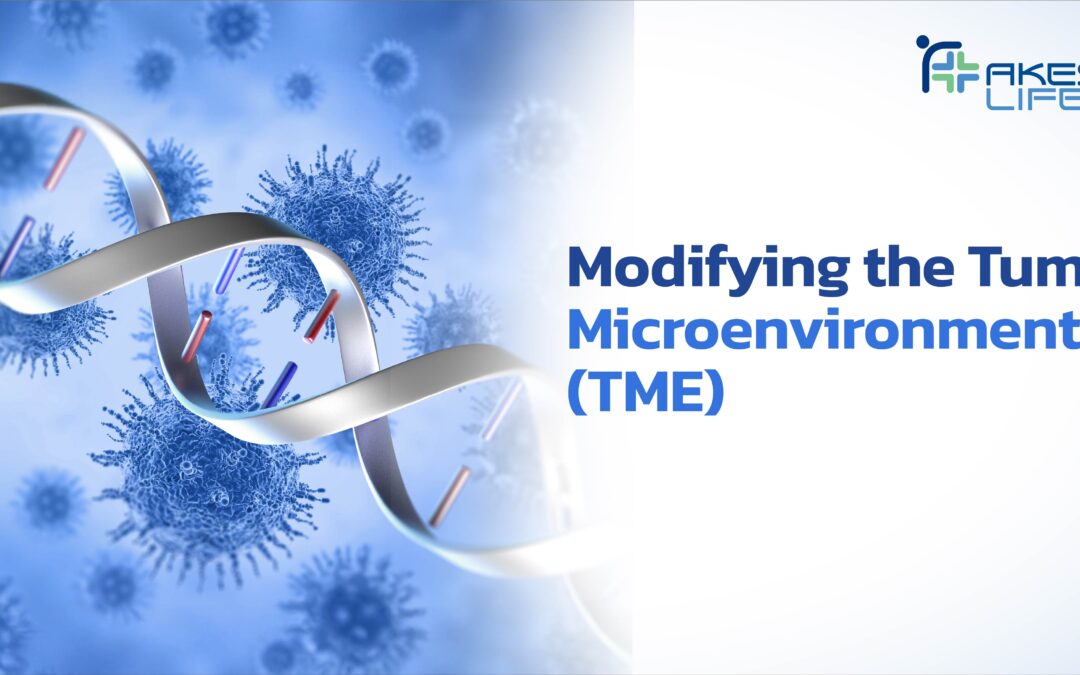Cancer cells exhibit growth and energy usage patterns that differ significantly from normal cells. As a result, the surrounding environment of cancerous tissue develops unique characteristics distinct from healthy tissue, known as the Tumor Microenvironment (TME).
The TME typically possesses the following features:
Low oxygen levels
Higher-than-normal acidity
Accumulation of inflammatory substances

Research has shown that these characteristics promote cancer growth and metastasis, aid cancer cells in evading immune destruction, and diminish the effectiveness of chemotherapy and radiation therapy.
Therefore, modifying the TME to resemble normal tissue is an important supportive approach in cancer treatment. This can enhance the immune system’s function and reduce the cancer cells’ ability to grow and resist treatment.

Strategies to Modify the Tumor Microenvironment
Alkalinization Therapy – Balancing pH Levels
Physicians may use dietary therapy along with agents like sodium bicarbonate to reduce tissue acidity, which can slow the growth of cancer cells.
Enhancing Blood and Lymphatic Circulation
Techniques such as exercise, oil massage, and lymphatic drainage stimulation are used to eliminate waste and improve oxygen delivery to abnormal tissues, correcting impaired cellular metabolism.
Oxidation Therapy – Oxygen-Based Treatment
Treatments like ozone therapy and hyperbaric oxygen therapy help reduce inflammation, balance the microbiome, and optimize cellular metabolism.
Hyperthermia Therapy – Heat-Based Treatment
Local or whole-body heat application can modulate cellular functions within the TME and contribute to anti-cancer effects.
Probiotics
Studies suggest that probiotics play a key role in balancing the microbiome within the TME, which directly influences the immune system’s response to cancer.

Objectives of TME Therapy
Although these approaches may not directly destroy cancer cells, they aim to:
Create conditions unfavorable to cancer cell growth
Support immune function
Enhance the effectiveness of drugs and radiation therapy
Reduce the risk of cancer drug resistance

In essence, modifying the Tumor Microenvironment aims to restore the surroundings of cancer cells to a state more similar to healthy tissue. Approaches such as pH balancing (Alkalinization Therapy), improving circulation, and applying oxidation therapies like ozone and hyperbaric oxygen can help reduce inflammation, revive cellular metabolism, and create a less favorable environment for cancer progression—ultimately improving the body’s responsiveness to treatment.


